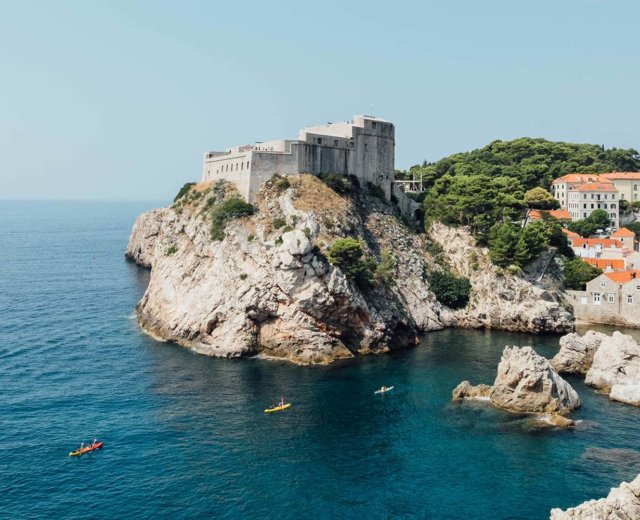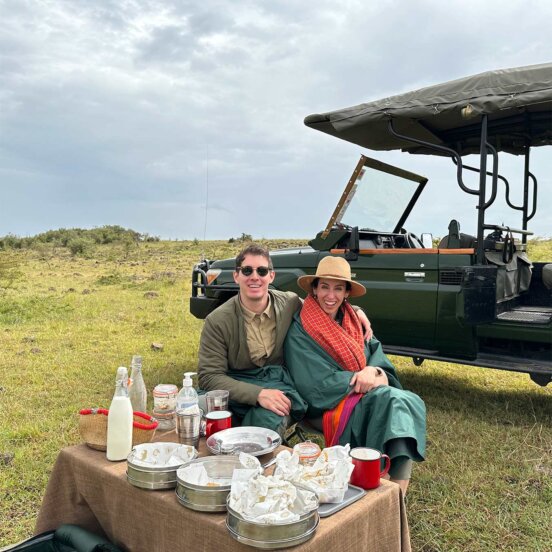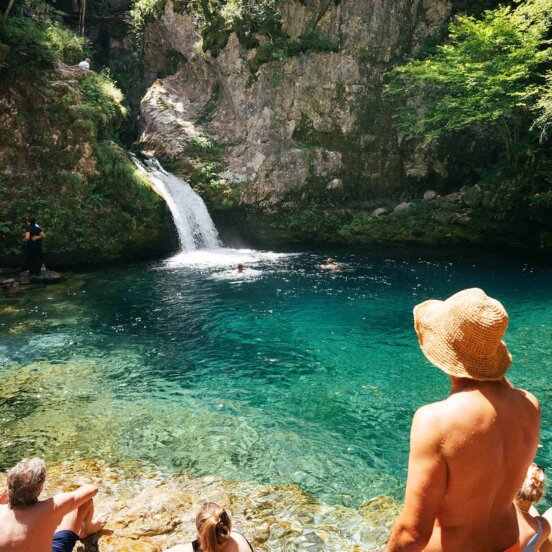Behind the masks and myths of Indian folklore with photographer Charles Fréger
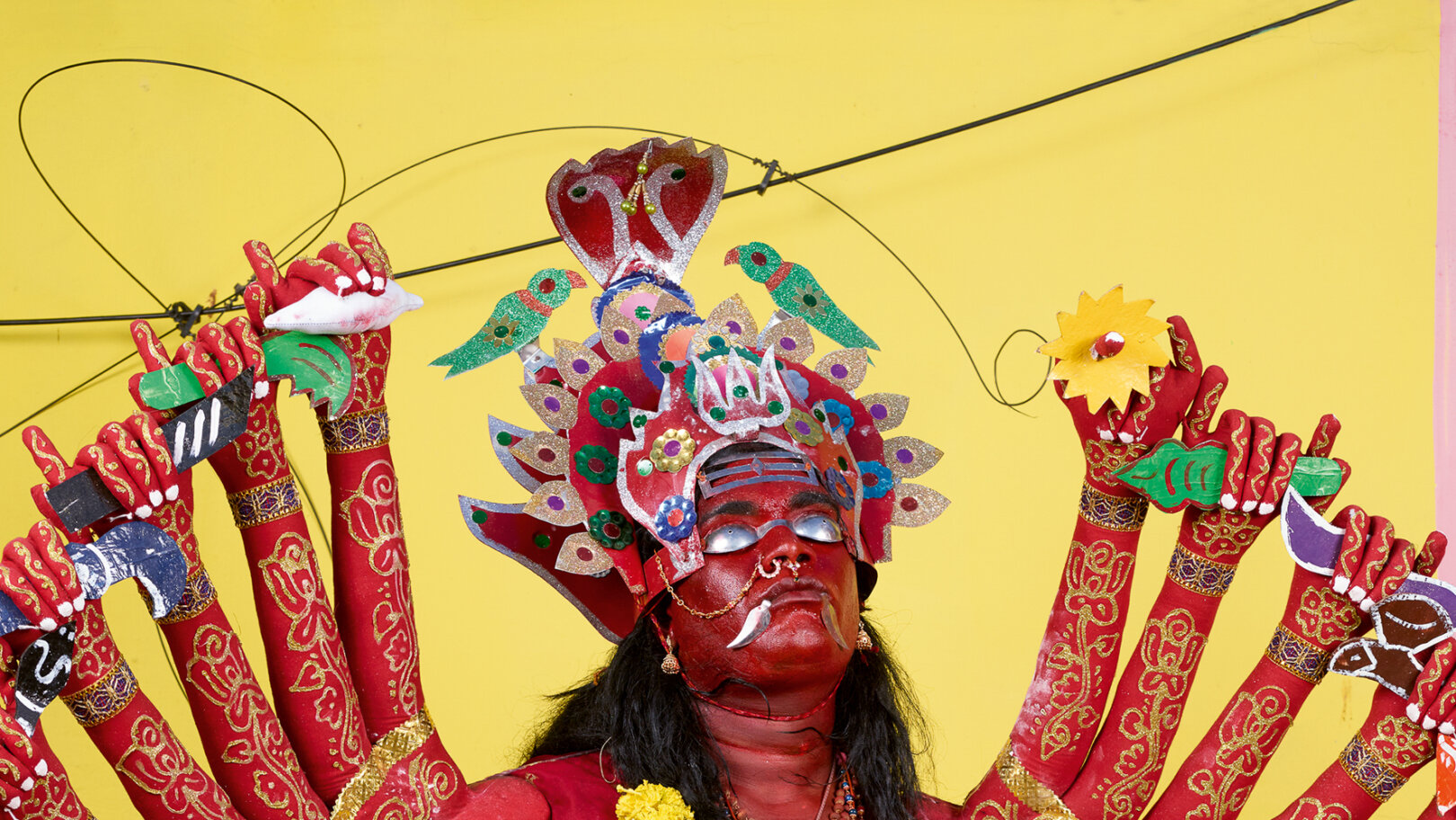
My new photography book, Aam Aastha: Indian Devotions, delves into the spectacular world of Indian folklore, featuring mighty gods, warrior figures, musicians and mahouts. It’s the result of a huge project in which my team and I travelled around India on five separate research trips, connecting with villages and communities all over the country and working around the various restrictions of Covid.
India is a challenging place to work in. Wherever you go there are lots of people, along with a feeling of constant movement. So, whenever I was composing portraits of masked characters, I was also navigating my way around farmers working in rice fields or kids with animals in the street.
Sometimes a crowd would form to see what was going on – or the police would arrive to discuss permits – so a whole sideshow emerged alongside the main event. Plus, you’re generally working in 40°C heat with zero cloud cover.
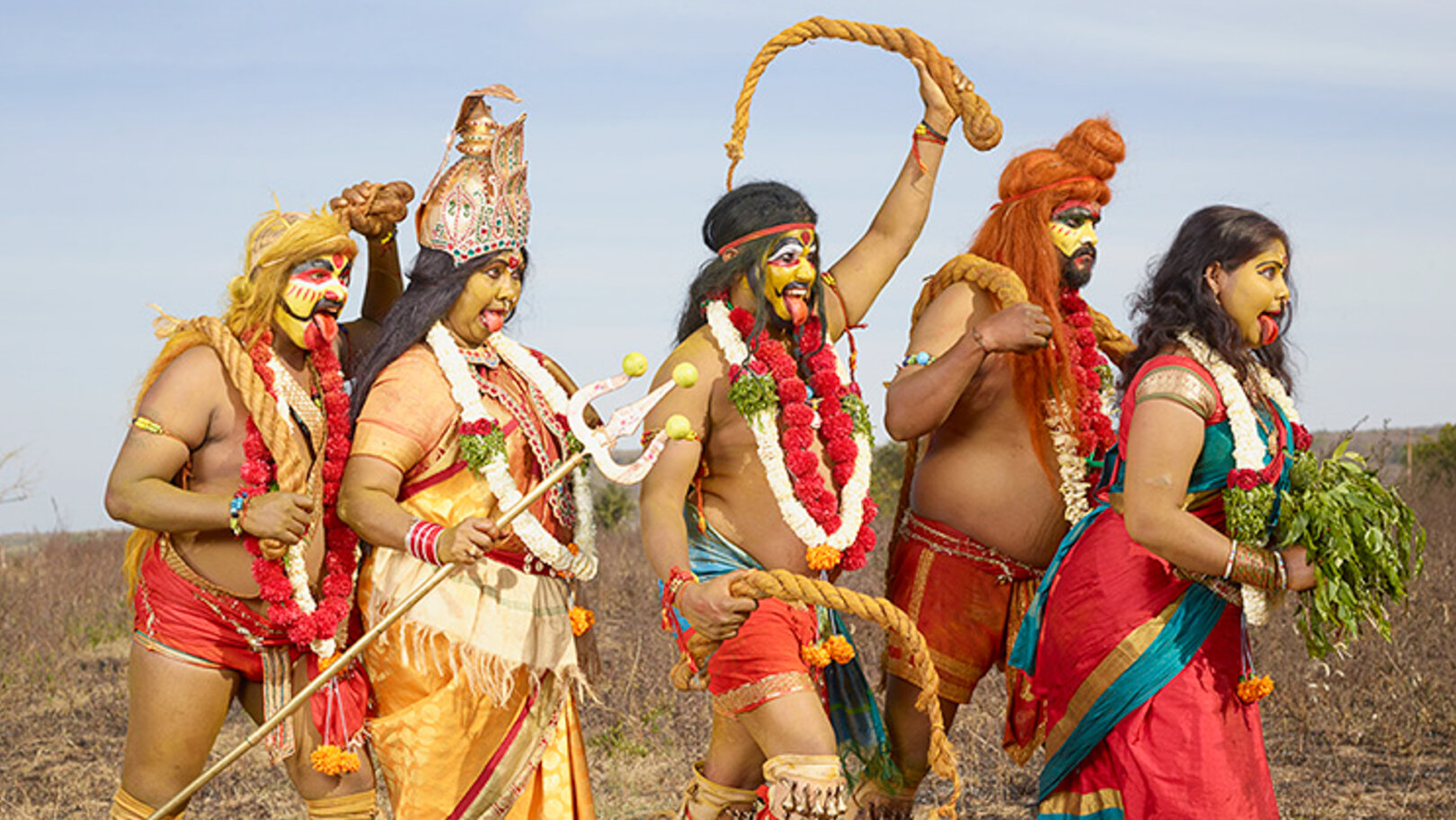
The rich visual appeal of Indian folklore resonates with me
This is an environment I’ve worked in a lot and each time I wonder if I’ll have the energy to return. But the depth and rich visual appeal of Indian folklore rituals is something that resonates closely with my style of portraiture.
Logistically, the Aam Aastha (or “common faith”) series was all about teamwork. We operated via a group of assistants, drivers, translators and fixers who worked tirelessly to set up appointments around particular ceremonies or costume compositions. It was a complex, sometimes frustrating, task. Yet the reward lies in this sensuality and intensity you get from models elaborately dressed up as animals, avatars or gods.
Indian communities have a real taste for masquerade – there’s nothing fake about it. People are performing in a particular way because it’s an integral part of their culture. For example, I went to photograph a Mudiyettu folk dance drama in Kerala. The theatre sequence, which enacted a battle between the goddess Kali and the demon Darika, lasted from 7pm to 5am the next morning. During that time we moved through different chapters and interactions; no one left. It was so impressive and shows how deeply rooted these traditions are.
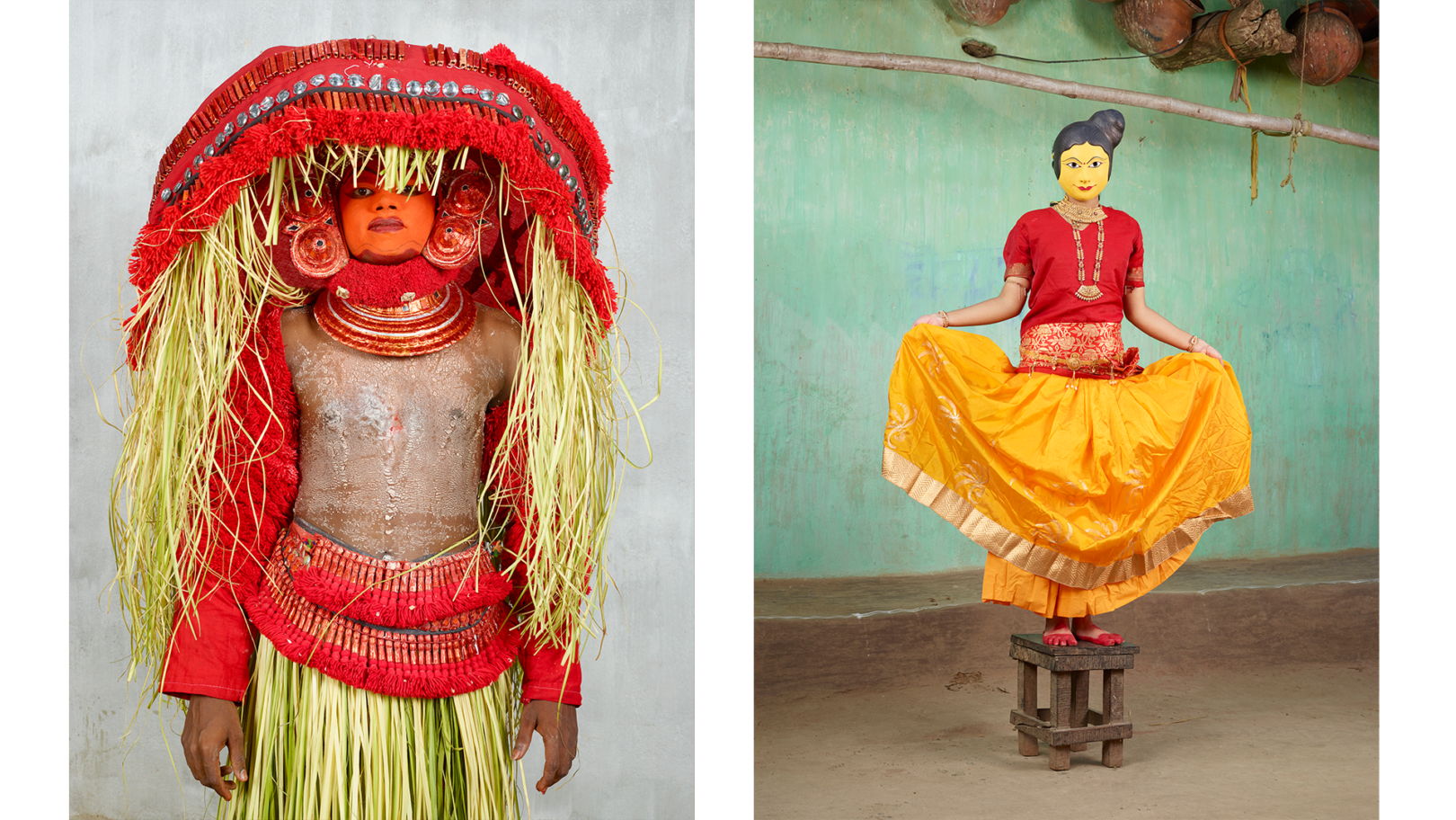
There’s a constant sense of tension between the performer and me
From a European perspective, when you’re doing a project about the gods, you imagine it to be somehow spiritual and light. But the opposite was true in India. The people I photographed were very direct and grounded. They were standing in front of me dressed as Krishna or Hanuman – and boom, that was it. There was nothing for either of us to hide behind.
What I’m looking for in those moments is a kind of power that comes through contrast and tension. Like any good piece of theatre, the show relies on me believing in what I’m watching. Masks, makeup and costume become an interface in this agreement; they are what separates reality from the illusion.
There’s a constant sense of tension between the costumes, the performer and me – the audience. There’s a layer of physical tension, too: the model’s body is tense, they are set in character, and their eyes might be open or their tongue out.
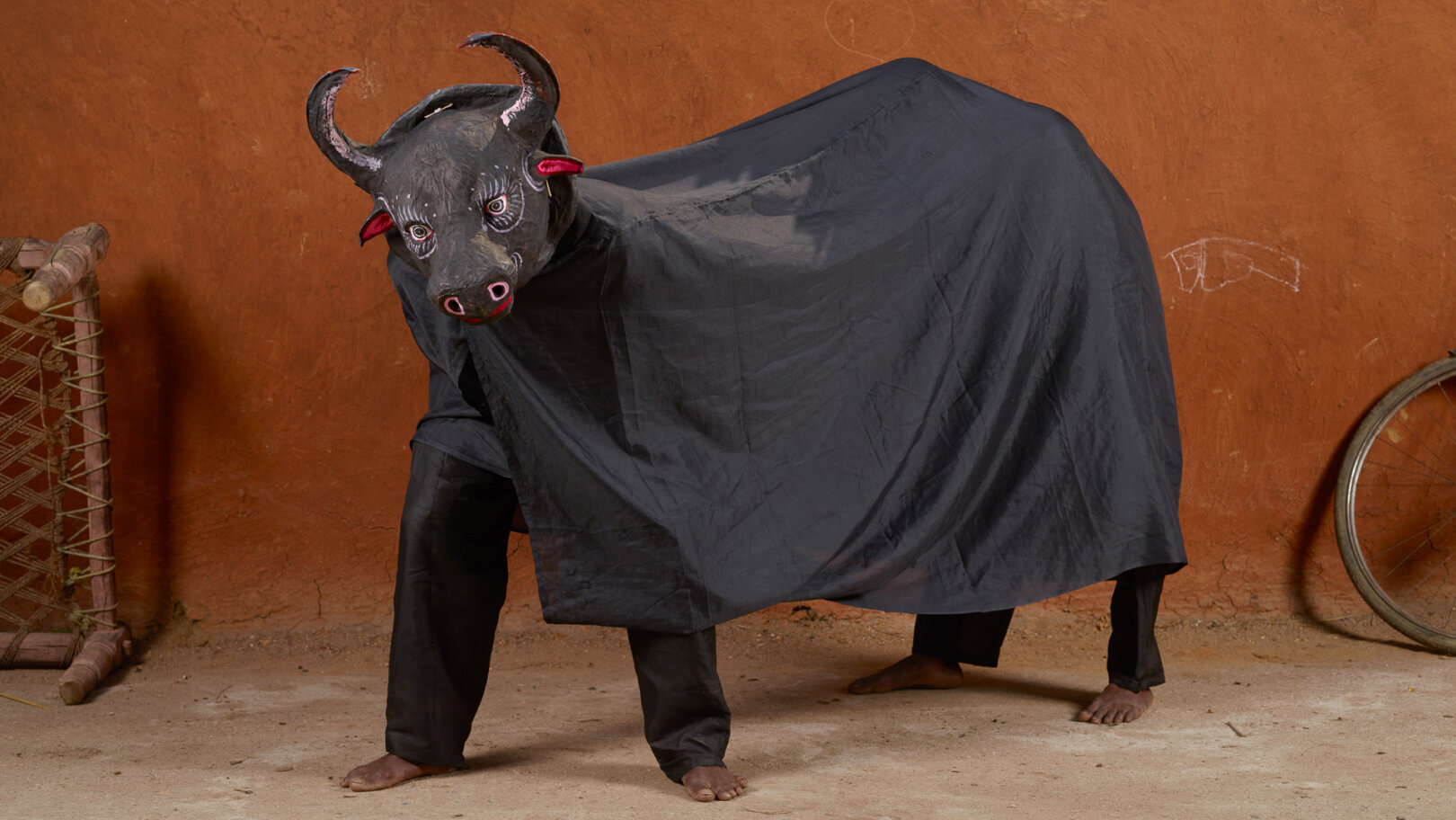
One of my favourite photos is simply two guys dressed as a bull
I see my role as something of a sculptor. I’m very precise. If you look at my portraits, you’ll see I push every attitude and detail that surfaces, right down to the positioning of someone’s fingers or toes. I’m not the kind of photographer who shoots five pictures and I’m done. I’m aiming for a particular sensation and once it’s there, I’ll continue to expand the boundaries of where I can go with it.
Working behind the camera is like a dance; together you and the model have to try to find the right position and dynamic with the surrounding landscape. The colours and the atmosphere all come into play.
Often my expectations of what a particular character or festival would be like were quite different from what actually happened on the day. The outcome could be surprising, even to me. One of my favourite photos in the book is of two guys dressed as a bull in black fabric. It’s so basic, but at the same time it works perfectly – I love it.
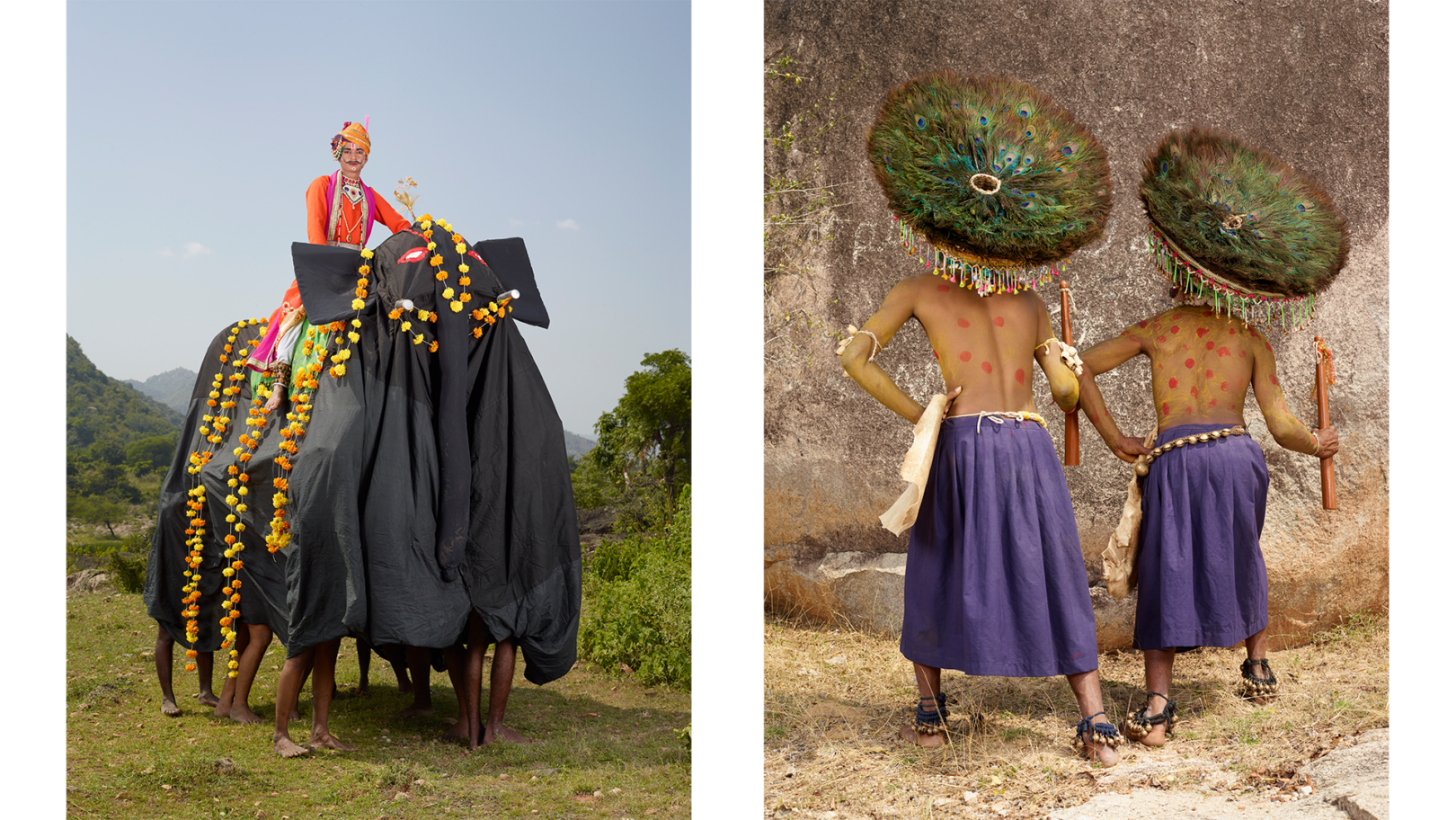
I wanted Aam Aastha to give back to the communities we visited
Because of the kinds of photos I take, people often imagine I’m like an anthropologist. But I think it’s a fantasy to think you can really know another culture by immersing yourself within it. As a photographer, I like to take some distance and know that there will always be things I don’t understand, especially in an area as rich and varied as Indian mythology.
Take the tale of the Ramayana. I’ve been hearing versions of this tantalising myth around Rama, Sita and Lakshmana for years now. Yet still, I would struggle to explain it to you. I think there’s a respect in that and in realising your perspective is limited.
As a project, I wanted Aam Aastha to give back to the communities we visited, so I paid all the models who appeared and each one will also receive a copy of the book.
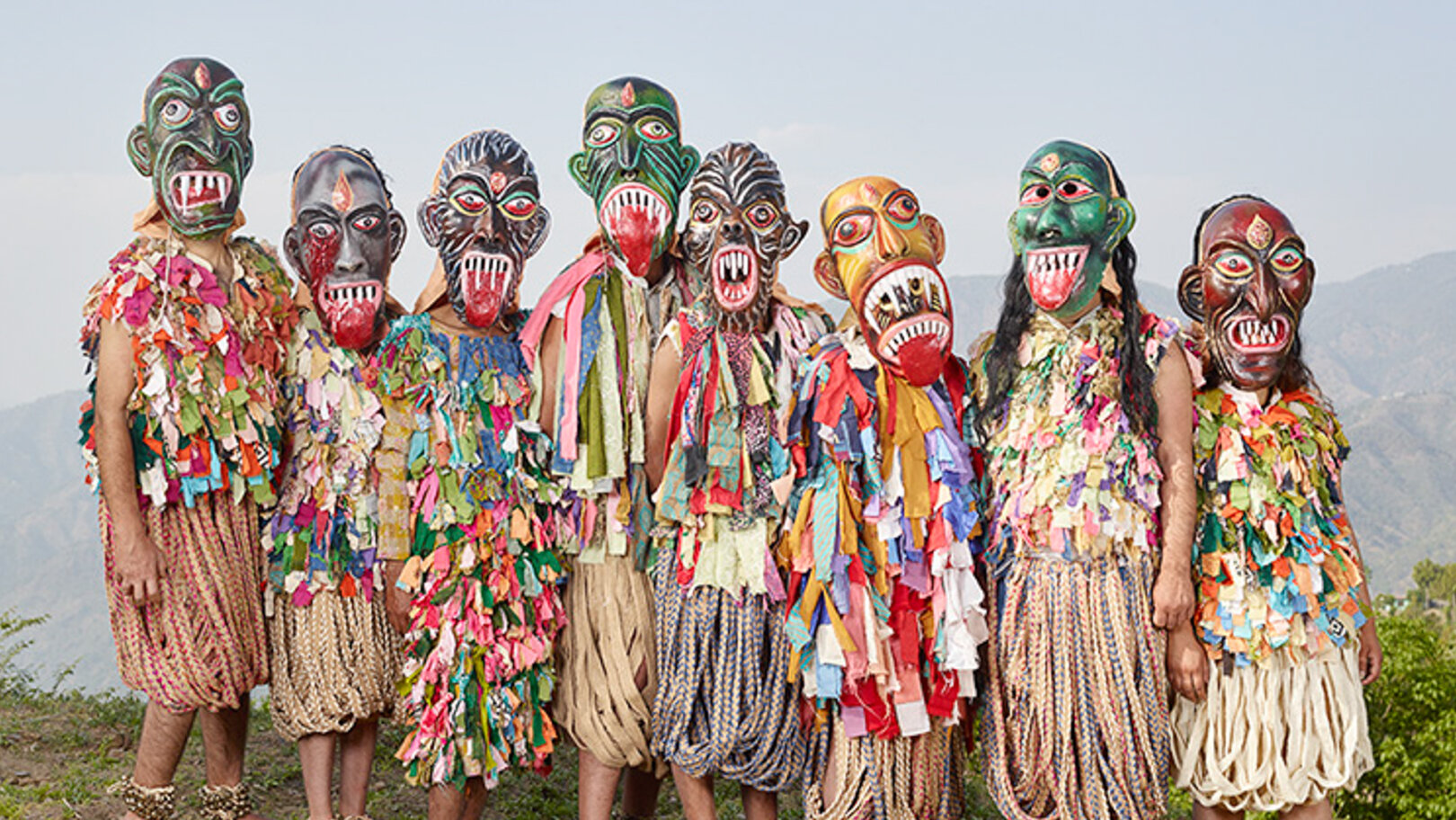
The writer I worked with really tapped into the stories behind the masks
Naturally, many people were performing or dressing up as part of the exchange that we had agreed to. But others would behave more like actors; they would fully adopt a new character and command the attention of bystanders. Or they wanted to show off with dramatic gestures, like making holes in their cheeks. It was always difficult to tell whether they were acting or if, in their heads, they were becoming gods for real.
The Aam Aastha photographs are accompanied by descriptions of costumes, masks and rituals by Indian curator Kuhu Kopariha, as well as contributions from the French philosopher Catherine Clément and the award-winning Indian author Anuradha Roy.
Anuradha visited my home last spring to look over my photos and almost immediately tapped into the idea of the stories behind the masks. She has enormous empathy and used this to read into the humanity of my portraits, connecting them to what is going on with the history and politics of India. Her text is beautiful.
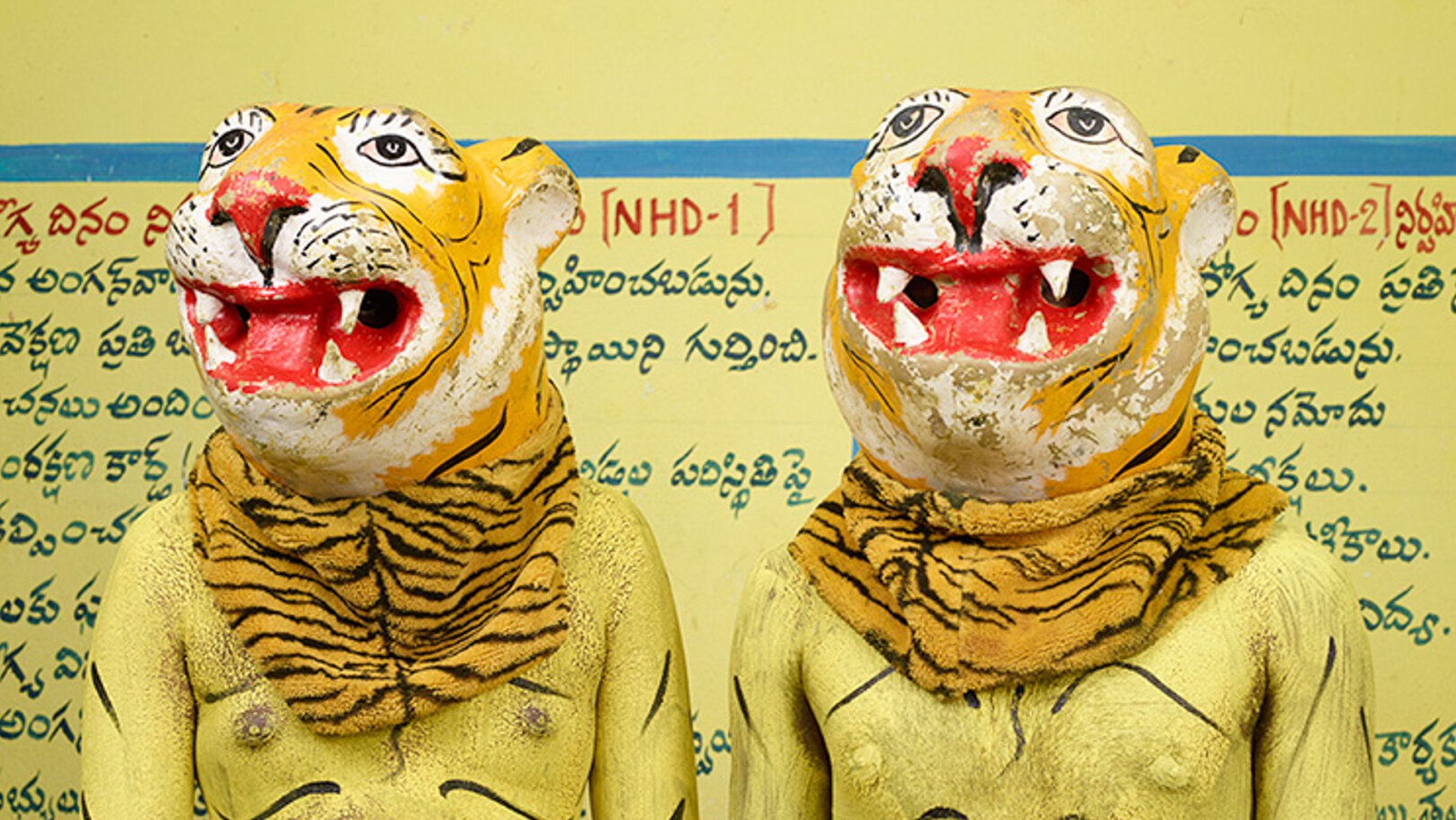
My portraits press pause on India’s frenzy
Above all, I like to think my work in Aam Aastha is like looking at a magical butterfly. To be in India is to be part of a very noisy, chaotic world, but my portraits press pause on the frenzy. They’re an invitation to go in close and admire the finer details – the model’s mood, the minutiae of his costume, the immersive background landscape – each of which is brimming with life and beauty.
Aam Aastha: Indian Devotions by Charles Fréger is published by Thames and Hudson and is available to buy now.
Explore Flash Pack’s adventures in India, featuring open-air Kathakali dance performances, storytelling from Keralan tea pickers and community time with the desert tribes of Bishnol.
Images: Courtesy of Charles Fréger

